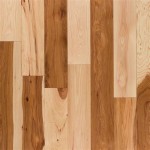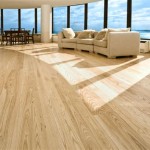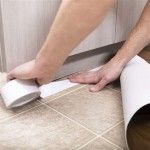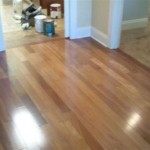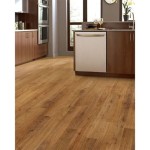How to Get Latex Paint Off of Vinyl Plank Flooring
Vinyl plank flooring is a popular choice for many homeowners due to its durability, water resistance, and aesthetic appeal. However, accidents happen, and latex paint spills are a common occurrence, especially during home renovation projects. Removing latex paint from vinyl plank flooring requires a careful and methodical approach to avoid damaging the flooring material. This article will provide a comprehensive guide to effectively and safely remove latex paint from vinyl plank flooring.
The key to successful latex paint removal lies in prompt action and the selection of appropriate cleaning agents and tools. Allowing the paint to dry completely can make the removal process significantly more difficult and potentially lead to irreversible damage to the vinyl flooring. Identifying the type of latex paint is also crucial; while most household latex paints respond well to standard cleaning methods, specialized paints might require specific solvents or techniques.
Immediate Action and Initial Cleaning
The very first step after a latex paint spill is to act quickly. The fresher the spill, the easier it is to remove. Immediately grab a clean, damp cloth and blot the spill. Avoid wiping, as this will only spread the paint and potentially drive it deeper into the texture of the vinyl. Continue blotting until you have absorbed as much of the wet paint as possible. Change the cloth frequently to prevent re-deposition of the paint onto the flooring.
Once the majority of the wet paint is removed, examine the area closely. Even after blotting, a thin layer of paint residue might remain. For this residue, a mild detergent solution can be effective. Mix a small amount of dish soap with warm water. Dip a clean cloth into the soapy water, wring it out thoroughly, and gently wipe the affected area. Repeat this process until the residue is gone. It is critical to avoid using excessive water, as it can seep into the seams of the vinyl planks and potentially cause damage over time.
After cleaning with the detergent solution, rinse the area with a clean, damp cloth to remove any remaining soap residue. This step is important because soap residue can attract dirt and leave a dull film on the flooring. Finally, dry the area thoroughly with a clean, dry cloth. This will prevent water spots and ensure that no moisture is trapped beneath the paint residue.
Addressing Dried Latex Paint
If the latex paint has already dried on the vinyl plank flooring, the removal process becomes more challenging. Dried paint adheres more strongly to the surface and requires more aggressive methods to dislodge it without causing damage. Before resorting to harsh chemicals, try gentler methods first.
One effective method for removing dried latex paint involves using warm water and a soft plastic scraper. Soak a clean cloth in warm water and place it over the dried paint for several minutes. This helps to soften the paint and make it easier to scrape away. Ensure the cloth is warm, not scalding hot, to avoid damaging the vinyl. After a few minutes, use the plastic scraper to gently scrape the softened paint away. Hold the scraper at a low angle to the flooring to prevent gouging or scratching the vinyl surface. Work slowly and patiently, re-wetting the cloth as needed to keep the paint softened.
Another useful tool for removing dried latex paint is a hair dryer. The heat from the hair dryer can soften the paint, making it easier to peel or scrape off. Hold the hair dryer a few inches away from the paint and move it back and forth to evenly heat the area. Be careful not to overheat the vinyl, as excessive heat can cause it to warp or discolor. Once the paint is softened, use a plastic scraper to gently remove it. This method is particularly effective for small splatters or drips of paint.
If the warm water and scraping method is not sufficient, consider using a specialized latex paint remover that is specifically formulated for use on vinyl surfaces. These products are typically available at hardware stores and home improvement centers. Always read and follow the manufacturer's instructions carefully. Before applying the paint remover to the entire affected area, test it on an inconspicuous spot to ensure that it does not damage or discolor the vinyl. Apply a small amount of the remover to a clean cloth and gently rub it onto the paint. Allow it to sit for the recommended amount of time, and then scrape away the softened paint with a plastic scraper. Rinse the area thoroughly with clean water and dry it with a clean cloth.
Utilizing Solvents and Specialized Cleaners
In cases where gentler methods have proven ineffective, stronger solvents or specialized cleaners may be necessary. However, extreme caution must be exercised when using these products, as they can potentially damage the vinyl plank flooring if not used carefully. Always prioritize testing the solvent on an inconspicuous area before applying it to the entire paint stain.
One commonly used solvent for removing latex paint is isopropyl alcohol (rubbing alcohol). Isopropyl alcohol can effectively dissolve latex paint without being as harsh as some other solvents. Apply a small amount of isopropyl alcohol to a clean cloth and gently rub the affected area. Avoid pouring the alcohol directly onto the flooring. After a few minutes, use a plastic scraper to gently remove the softened paint. Rinse the area thoroughly with clean water and dry it with a clean cloth. Ensure adequate ventilation when using isopropyl alcohol, as it can produce fumes.
Another option is to use a product specifically designed for removing paint from surfaces, such as Goo Gone. These types of products contain a blend of solvents and detergents that can help to dissolve the paint without damaging the underlying surface. Again, test the product on an inconspicuous area first. Apply a small amount to a clean cloth and gently rub the affected area. Follow the manufacturer’s instructions for dwell time and removal. Rinse the area thoroughly with clean water and dry it with a clean cloth.
Mineral spirits can also be used to remove latex paint, but it should be used with extreme caution on vinyl plank flooring. Mineral spirits are a stronger solvent than isopropyl alcohol and can potentially damage the vinyl if used improperly. Always test it on an inconspicuous area first, and use it sparingly. Apply a small amount to a clean cloth and gently rub the affected area. Rinse the area thoroughly with clean water and dry it with a clean cloth. Proper ventilation is essential when using mineral spirits, as it is flammable and can produce harmful fumes.
When using any solvent or specialized cleaner, it is crucial to wear appropriate protective gear, such as gloves and eye protection. This will help to protect your skin and eyes from potential irritation or damage. Always dispose of used cloths and solvents properly, following local regulations.
Preventative Measures and Maintenance
Preventing latex paint spills is always preferable to having to remove them. When painting, take precautions to protect your vinyl plank flooring by covering it with drop cloths or plastic sheeting. Secure the coverings with painter's tape to prevent them from shifting during the painting process. Be especially careful around edges and corners, as these areas are most susceptible to spills and splatters.
Regular cleaning and maintenance of your vinyl plank flooring can also help to prevent paint from adhering strongly to the surface. Sweep or vacuum the flooring regularly to remove dust and debris. Mop the flooring with a mild detergent solution to keep it clean and free of stains. Avoid using harsh chemicals or abrasive cleaners, as these can damage the vinyl and make it more susceptible to staining.
If you are planning a major painting project, consider temporarily covering your vinyl plank flooring with a protective layer of plywood or hardboard. This will provide a durable barrier against spills and splatters and prevent any potential damage to the flooring. Removing the plywood or hardboard after the painting project is complete will leave your vinyl plank flooring in pristine condition.
Another preventative measure involves using a paint tray liner. This will help contain the paint and prevent it from spilling onto the floor. Additionally, be mindful of where you set your paint brushes and rollers. Avoid placing them directly on the flooring, as they can drip paint and cause stains. Use a paint brush holder or a paint can clip to keep your brushes and rollers off the floor.
By taking these preventative measures, homeowners can significantly reduce the likelihood of latex paint spills and stains on their vinyl plank flooring. This will save time and effort in cleaning and maintenance and help to preserve the beauty and longevity of the flooring.

How To Get Paint Off Vinyl Floor Watch Before You Use Mineral Spirits

7 Brilliant Ways To Get Paint Off Vinyl Floors Flooring Remover Painted

How To Get Paint Off Of Laminate Flooring Easy Tutorial

7 Brilliant Ways To Get Paint Off Vinyl Floors

3 Ways To Remove Paint From Vinyl Wikihow

How To Remove Paint Off Hardwood Vinyl Floor

How To Get Paint Off Vinyl Floor Watch Before You Use Mineral Spirits

How To Remove Latex Paint Spots

How To Remove Paint On Floors The Easy Way With Acetone Pa Cleaning Tiktok

How To Remove Scratches From Vinyl Flooring Floor Techie Wood Plank
Related Posts

